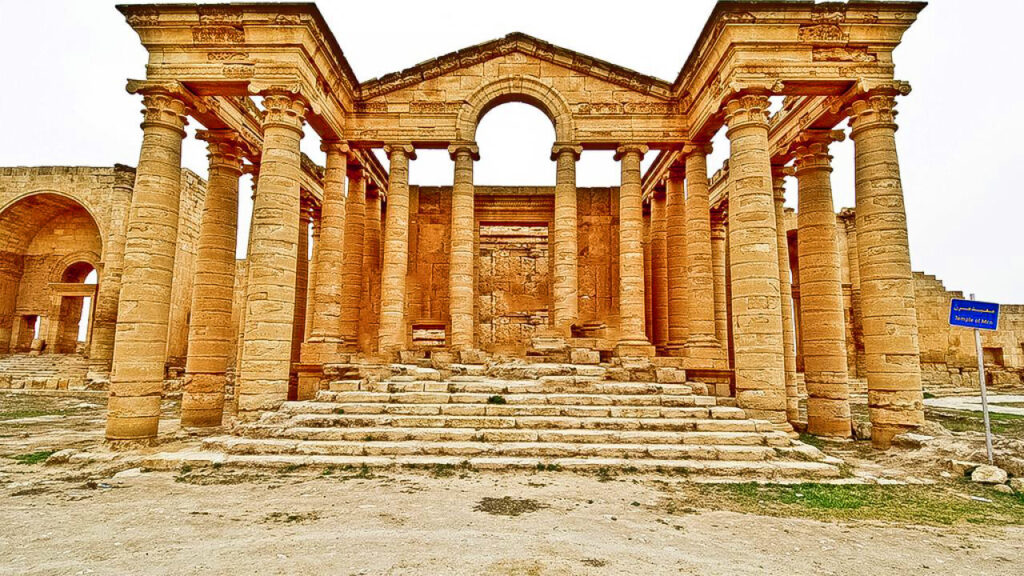Hatra is 110 km away from Mosul. It lasted about two centuries, from the first century to the second century AD. It was ruled by four kings whose rule lasted for nearly a hundred years. The civilization of this country was Aramaic-speaking and believed in the Iraqi planetary religion, with a clear influence on the civilization of the Greeks and Romans. It seems that the urban woman had a distinct and public role in the political and religious aspects. Hatra emerged during the period of domination of Iraq. It was founded by Iraqi groups believed to be of Arab origin, even though their language and culture is Aramaic. One of its kings is known by his famous writing (Sannatruk the King of Arabs), i.e. we will knock on the king of the Arabs, and because Hatra is one of the famous desert cities of Iraq and the Levant, like Petra and Palmyra, its story of growth and destruction does not differ from the stories of others, as the ambitions of its inhabitants resisted the Roman and Persian authorities for a long time, but the Romans and the Persians destroyed them all one after the other, and it was the fate of Hatra to be destroyed by the Sassanid Persians.
The Kingdom of Hatra was known for its architecture, arts, weapons and industries. Hatra was at the level of Rome in terms of progress, as it had bathrooms with an advanced heating system, watchtowers, a court, carved reliefs, mosaics, coins and statues. In fact, the language and civilization of the people of Hatra is Aramaic, but it was considered Arab through the names of its leaders and symbols of Arabic character. Hatra fell into the hands of the Sassanid Persians in 241 AD and was severely destroyed, and its people were prevented from carrying arms, which led to the end of its historical existence.





